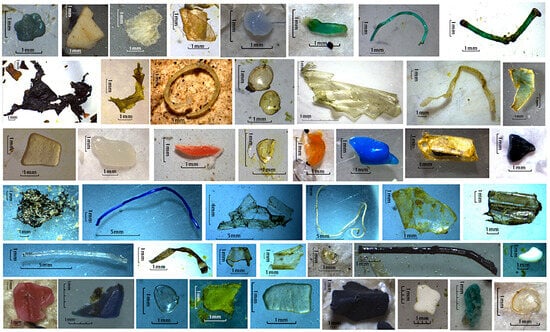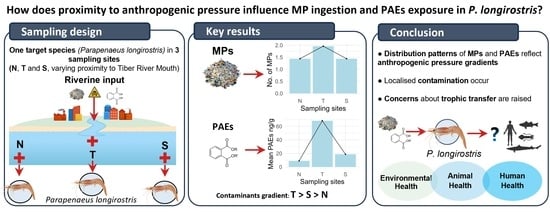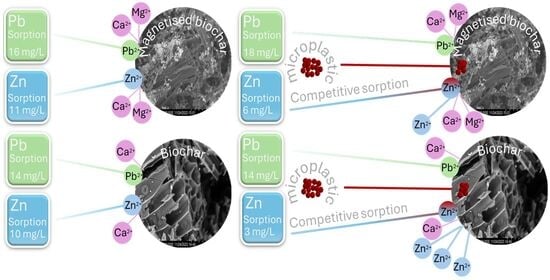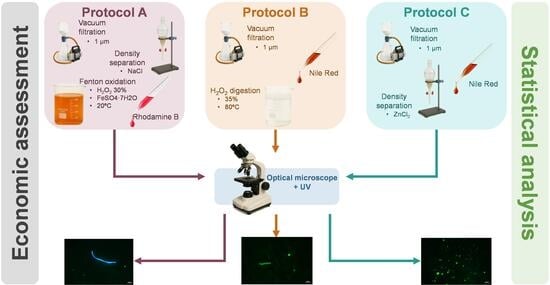Feature Papers in Microplastics
A topical collection in Microplastics (ISSN 2673-8929).
Viewed by 14378Editor
Interests: environmental applications of nanobubble technology; marine litter-fate and biodegradation of weathered plastics and microplastics; combating marine oil spills with biological means; bioremediation; phytoremediation; wastewater treatment and subsequent reuse and utilization
Special Issues, Collections and Topics in MDPI journals
Topical Collection Information
Dear Colleagues,
Microplastics (MPs) have been found in all environmental compartments such as seawater and freshwater bodies, municipal wastewater and urban runoff, agricultural soils, sediments, and air. The level of plastic debris, mainly in the form of microplastics, in the environment is reaching unprecedented levels, and there is worldwide concern about their adverse effects on both living organisms (including humans) and the environment.
This Topic Collection of Microplastics aims to publish original articles related to the following topics: their sources, sinks, and environmental fate; potential effects on ecosystem services and human life; and mitigation measures to reduce their adverse effects. It is also vital to ensure the inclusion of articles raising public awareness and building effective science communication with all stakeholders (e.g., civil society, NGOs, government decision makers, and industry) to convey specific messages related to threats and potential opportunities to reduce microplastic impacts.
The topics include but are not limited to the following:
- Sampling, characterization, and quantification of microplastics;
- Microplastics and nanoplastics in soils;
- Ocean cleanup of plastics and microplastics;
- Marine debris and fishing gear—collection, recycling, fate, and cleanup;
- Plastic and microplastic pollution and associated contaminants;
- Plastic pellets in the environment—collection and mitigation;
- Microfibers and nanoplastics from textiles;
- Human health effects of microplastics and nanoplastics;
- Ecotoxicological effects of microplastics and nanoplastics;
- Biodegradable plastics and microplastics;
- Chemical and biological recycling of waste plastics and microplastics;
- Mitigation of micro- and nanoplastic pollution in aquatic systems;
- Modelling fate and transport of plastics and micro- and nanoplastics in the environment;
- Modelling of the generation of secondary microplastics;
- Modelling of biodegradation and weathering of plastics and microplastics;
- Legislation, policies, and economic impacts.
Alongside original research contributions and critical reviews, we encourage the submission of opinion papers, defined as short articles which reflect the author’s viewpoints on a particular subject, technique, or recent findings. Their structure is similar to that of a review, despite being significantly shorter and focused on the author’s view as opposed to a comprehensive, critical overview of current research.
Prof. Dr. Nicolas Kalogerakis
Collection Editor
Manuscript Submission Information
Manuscripts should be submitted online at www.mdpi.com by registering and logging in to this website. Once you are registered, click here to go to the submission form. Manuscripts can be submitted until the deadline. All submissions that pass pre-check are peer-reviewed. Accepted papers will be published continuously in the journal (as soon as accepted) and will be listed together on the collection website. Research articles, review articles as well as short communications are invited. For planned papers, a title and short abstract (about 250 words) can be sent to the Editorial Office for assessment.
Submitted manuscripts should not have been published previously, nor be under consideration for publication elsewhere (except conference proceedings papers). All manuscripts are thoroughly refereed through a single-blind peer-review process. A guide for authors and other relevant information for submission of manuscripts is available on the Instructions for Authors page. Microplastics is an international peer-reviewed open access quarterly journal published by MDPI.
Please visit the Instructions for Authors page before submitting a manuscript. The Article Processing Charge (APC) for publication in this open access journal is 1200 CHF (Swiss Francs). Submitted papers should be well formatted and use good English. Authors may use MDPI's English editing service prior to publication or during author revisions.
Keywords
- sampling, characterization, and quantification of microplastics
- microplastics and nanoplastics in soils
- ocean cleanup of plastics and microplastics
- marine debris and fishing gear—collection, recycling, fate, and cleanup
- plastic and microplastic pollution and associated contaminants
- plastic pellets in the environment—collection and mitigation
- microfibers and nanoplastics from textiles
- human health effects of microplastics and nanoplastics
- ecotoxicological effects of microplastics and nanoplastics
- biodegradable plastics and microplastics
- chemical and biological recycling of waste plastics and microplastics
- mitigation of micro- and nanoplastic pollution in aquatic systems
- modelling fate and transport of plastics and micro- and nanoplastics in the environment
- modelling of the generation of secondary microplastics
- modelling of biodegradation and weathering of plastics and microplastics
- legislation, policies, and economic impacts

















